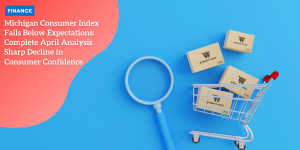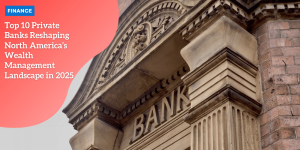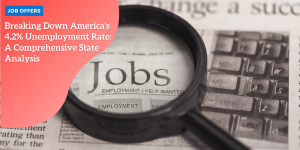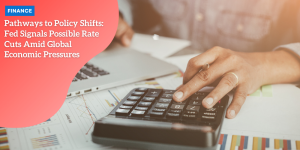Jamie Dimon’s Warning: US Interest Rates Could Surge to 8%

Navigating Uncharted Waters: Jamie Dimon’s Warning on US Interest Rates
The global financial landscape is currently undergoing significant transformations as policymakers and economic leaders strive to address the pressing challenges posed by inflation.
Anúncios
Among those who have taken a prominent stance on the evolving situation is Jamie Dimon, the long-serving CEO of JPMorgan Chase.
As the largest bank in the United States by assets, JPMorgan Chase holds a central position in the nation’s financial ecosystem, and Dimon’s insights are widely regarded as influential.
Recently, Dimon issued a stark warning regarding the trajectory of US interest rates, sending ripples across financial markets and sparking debates on the future path of monetary policy.
Anúncios
The comments made by Dimon underscore a broader conversation regarding the intricate relationship between inflation, interest rates, and economic growth.
While inflation has shown signs of moderating in recent months, the underlying challenges that led to price increases continue to persist.
Dimon’s warning centers on the risk of the Federal Reserve, the central banking institution of the United States, making premature decisions regarding interest rate cuts, particularly given the global complexities influencing inflation.
Anúncios
His statements have prompted many to reconsider the outlook for the US economy and its potential response to future economic pressures.
A Global Fight Against Inflation: Central Banks Step Up
The battle against inflation is not unique to the United States. Central banks around the world, from Europe to Asia, have been taking aggressive steps to tackle rising prices.
Inflation, driven by a mix of supply chain disruptions, high energy costs, labor market imbalances, and increased demand for goods and services, has led to a sharp rise in the cost of living across many countries.
In response, central banks have raised interest rates in an effort to curb excessive inflation.
This global trend began in earnest in 2022 and accelerated throughout 2023.
The Federal Reserve, along with other central banks, has adopted a tightening stance, making borrowing more expensive in an attempt to slow economic activity and reduce inflationary pressures.
While such actions are necessary to stabilize economies, they also come with risks.
Higher borrowing costs can slow economic growth, disrupt financial markets, and put stress on consumers and businesses alike.
As a result, central banks must carefully navigate this delicate balance between tightening monetary policy to control inflation and ensuring they do not trigger an economic downturn.
Market Anticipates Easing, But Dimon Urges Caution
Despite the global efforts to address inflation, there is a prevailing sentiment in financial markets that interest rates will begin to ease in 2024.
This expectation of rate cuts is fueled by a combination of factors.
One of the most significant is the moderation in inflation seen in the latter half of 2023, with price growth slowing in key areas such as food and energy.
In response to these encouraging signs, many economists and market participants anticipate that the Federal Reserve will begin cutting rates to support economic growth.
However, Dimon has urged caution regarding these assumptions. In his annual letter to shareholders, Dimon addressed the possibility of rate cuts but stressed the importance of understanding the broader economic context.
Specifically, he highlighted that JPMorgan Chase was preparing for a wide range of interest rates, including the current range of 5.25% to 5.5%, as well as the possibility of rates rising further, potentially reaching as high as 8% or more.
This range of potential outcomes reflects Dimon’s concern about the broader forces at play in the global economy.
He pointed out that the US economy continues to grapple with elevated levels of government spending, geopolitical tensions that drive military spending, and shifting global trade patterns.
These factors, combined with supply chain disruptions and labor shortages, could keep inflationary pressures elevated for longer than many anticipate.
For this reason, Dimon argued that the market should avoid being overly optimistic about the likelihood of significant rate cuts in the near term.
The Two-Sided Coin of Interest Rates: Curbing Inflation and Cooling the Economy
To fully understand Dimon’s perspective, it is crucial to examine the role of interest rates in the broader economic picture.
Interest rates are a key tool used by central banks to influence the economy.
When rates are raised, borrowing costs increase, which typically results in reduced spending by consumers and businesses.
This decrease in demand can help cool an overheating economy and bring inflation under control.
However, while high interest rates can help address inflation, they also have a cooling effect on economic growth.
In the context of the United States, the Federal Reserve’s decision to raise rates has led to increased borrowing costs for consumers and businesses.
Mortgages, car loans, and business loans have become more expensive, which has slowed down certain sectors of the economy.
For instance, the housing market has experienced a significant slowdown, with rising mortgage rates discouraging potential buyers and making it more challenging for homeowners to refinance.
The cooling effect of higher interest rates is not limited to the housing market.
Businesses, too, are feeling the pinch as the cost of capital rises.
Investment in new projects, expansions, and hiring may slow down if borrowing costs are too high.
While this cooling of demand helps reduce inflationary pressures, it also poses a risk of stagnation if the economy slows too much.
Beyond the Headlines: Factors Fueling Inflation
Despite these challenges, Dimon remains cautious about the expectation that inflation will quickly return to the Federal Reserve’s target level.
He pointed out that a variety of factors continue to drive inflationary pressures in the economy.
One key factor is government spending, particularly on infrastructure projects, social programs, and military expenditures.
While these initiatives can stimulate economic growth, they can also put upward pressure on prices, especially if they are financed through debt.
Another factor contributing to inflation is the trend of global remilitarization.
Geopolitical tensions, particularly in Eastern Europe and parts of Asia, have prompted countries to increase military spending, which has had ripple effects on the global economy.
The increased demand for defense-related goods and services has created supply bottlenecks, driving up prices in certain sectors.
Additionally, disruptions in global trade continue to play a role in inflation.
The ongoing supply chain issues, exacerbated by the COVID-19 pandemic and geopolitical tensions, have created shortages in critical goods.
This has led to higher prices, particularly in industries reliant on imports.
Trade disruptions also affect the cost of raw materials, such as metals and energy, which are key components in the production of many goods and services.
The Federal Reserve’s Balancing Act: Maintain or Reduce?
As the Federal Reserve assesses the economic landscape, its decision on whether to maintain or reduce interest rates will be pivotal.
The Fed must weigh the ongoing inflationary pressures against the potential risks to economic growth.
While inflation has moderated in some areas, it remains elevated in others, and the global factors influencing inflation are unlikely to dissipate quickly.
In light of these challenges, the Federal Reserve may choose to hold rates steady for the time being.
This approach would allow policymakers to assess whether inflation continues to subside and whether the economy can weather the impacts of higher borrowing costs.
On the other hand, if inflation remains stubbornly high, the Fed may opt to raise rates further.
Mixed Signals: Economic Performance Amidst Higher Rates
Despite the challenges posed by higher interest rates, the US economy has demonstrated resilience.
Job creation has remained robust, with the labor market continuing to add jobs at a steady pace.
Consumer demand remains strong, particularly in sectors such as services, which have benefited from the ongoing recovery following the pandemic.
However, the impact of higher borrowing costs is evident in certain sectors.
The housing market has slowed significantly, and businesses in capital-intensive industries are finding it more difficult to secure financing for expansion.
While these signs of a cooling economy are important to monitor, they are not yet sufficient to suggest that a recession is imminent.
Data and Decisions: Inflation Figures and Policy Outlook
As the Federal Reserve prepares to make its next policy decision, inflation figures will play a critical role in shaping its actions.
Analysts predict a slight increase in inflation, particularly in areas such as wages and services.
This uptick could complicate the case for immediate rate cuts, as the Fed may be reluctant to reduce rates in an environment where inflationary pressures are still present.
JPMorgan Chase: A Steady Hand in Uncertain Times
Under Jamie Dimon’s leadership, JPMorgan Chase has navigated numerous economic challenges, from the 2008 financial crisis to the global pandemic.
His recent warnings about the potential trajectory of US interest rates reflect his cautious approach to navigating uncertain economic waters.
By staying vigilant and prepared for a range of possible outcomes, JPMorgan Chase is positioned to weather the current economic storm.
In conclusion, while market expectations for rate cuts may be premature, Dimon’s warning serves as an important reminder that the path ahead remains uncertain.
The Federal Reserve will need to carefully balance the need to address inflation with the risk of stifling economic growth.
As the global economy faces a host of challenges, the next few months will be crucial in determining the future trajectory of US interest rates and their impact on both the domestic and global economies.





